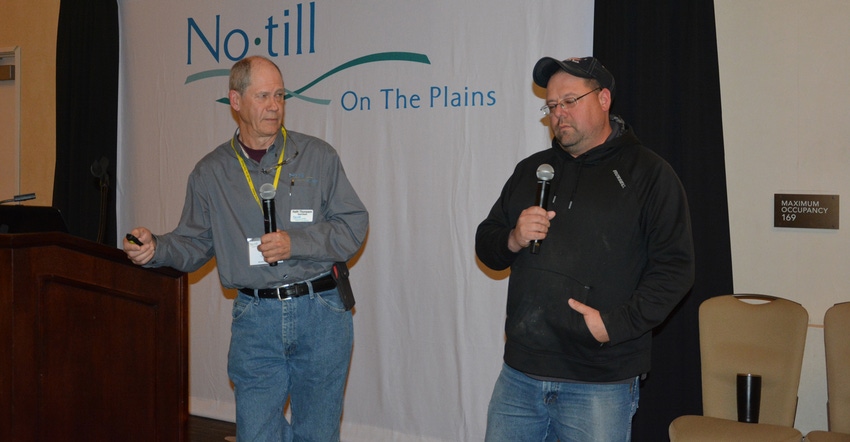
If you haven’t heard the term “regenerative farming,” put it in your database now. You’re going to hear a lot about it in the months and years ahead as more and more emphasis is placed on helping farmers find the best ways to rebuild healthy soil and enhance the bottom line.
Keith Thompson jokes that he spent his whole life going to “a whole lot of trouble getting rid all things livestock,” only to discover that wasn’t really a very good idea.
Keith farms with his brother, Doug, and his son, Ben, near Osage City, Kan. It was Ben who pushed to re-introduce livestock onto the farm, believing that the diversification would help both financially and agronomically.
Keith and Doug had made their decisions to take the farm to no-till based on belief that it would improve the water-holding capacity of their poor water-infiltration soils. They have been no-till long enough that Ben can’t remember a time when the farm disturbed the soil.
Maybe, Ben says, that’s why he could look beyond no-till to what might be an even better regenerative farming system, and why he pushed his dad to consider bringing livestock back into the picture.
“We went to a No-till on the Plains winter conference in 1999 and heard Dr. Dwayne Beck talk about the benefits of grazing livestock on cropland,” Keith said. “He said I needed to go to Argentina and take a look at how livestock grazing was helping their operations.”
He took the advice and realized that the crop rotations — absent the livestock — wasn’t a lot different from what he was already doing.
“We put some of the crop ground into grazing paddocks and started working on finding out which species of livestock would work better for us,” he said. “We’ve had a few elk, a lot of goats, some cattle. We’re still experimenting.”
The farm returned to livestock operations in 2007 with a mix of forage seeds, and they are still learning, though Keith now admits that Ben was right — adding livestock does help both financially and agronomically, as the cattle herd thrives and the soil continues to improve.
The Thompson farm near Osage City, Kan., is in an area that gets good rainfall — about 34 inches per year — but has upland soils with high clay content and poor water holding capacity. Most of the soils have a 20% to 40% clay content.
“2 to 4 inches of rain gives us about 10 days’ worth of water,” Thompson told attendees at the annual Agriculture’s Innovative Minds Symposium in February in Wichita. “We are hoping to improve that as we continue regenerative farming.”
The Thompsons are now using a robust crop rotation, several species in their cover crop mixes and a full integration of livestock. They are now implementing about three to five years of perennial grazing in their crop rotation.
Keith said there are challenge moving forward. Even as they put more land in cover crops to extend grazing, they are running out of places to put a growing cattle herd.
“We’re going to need to start planting perennial pastures again,” he said.
About the Author(s)
You May Also Like




